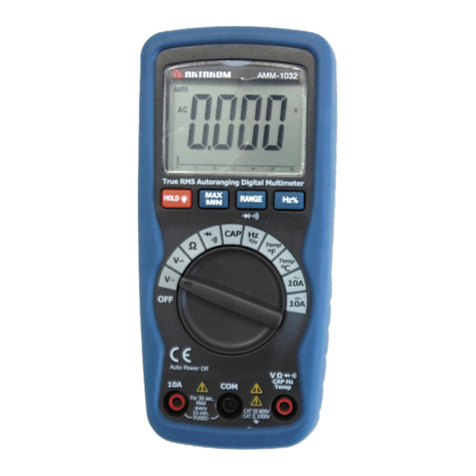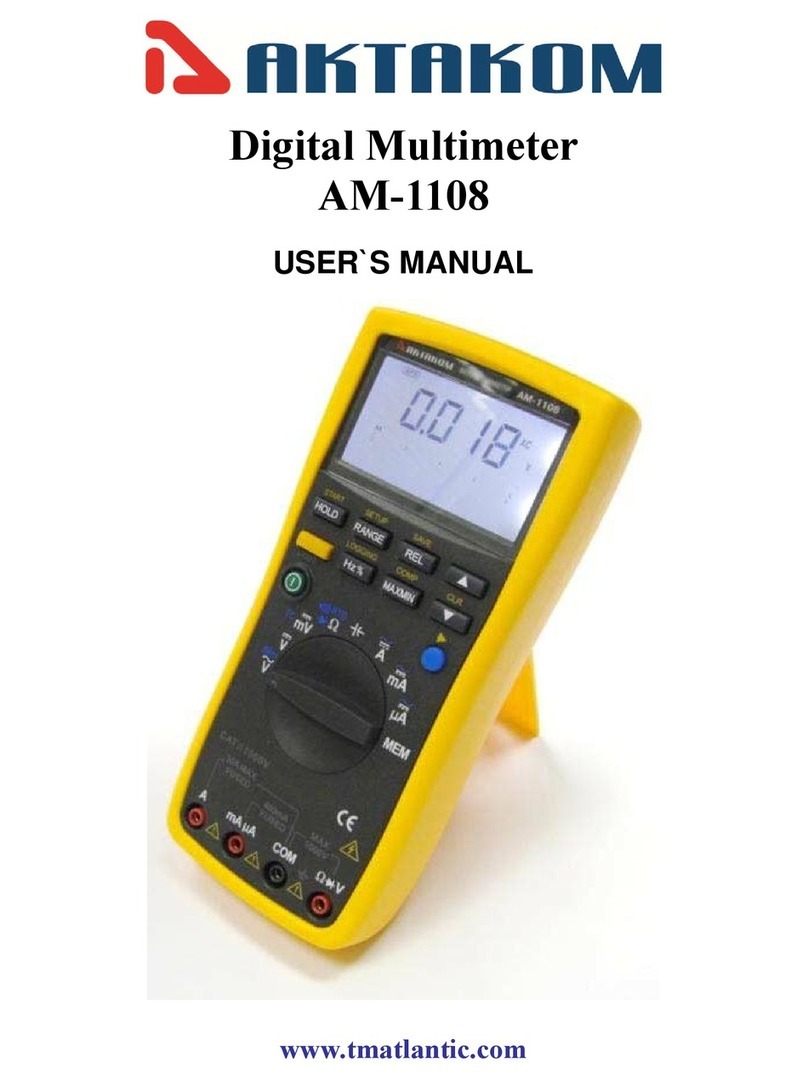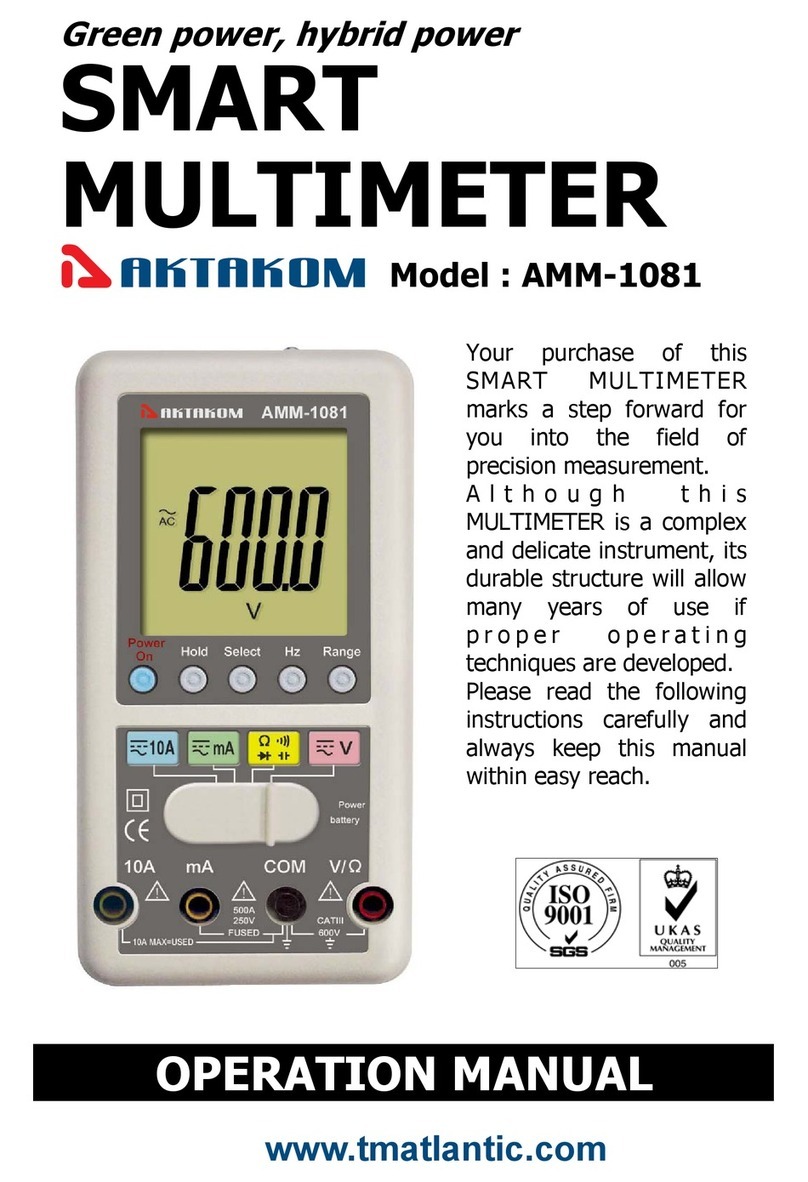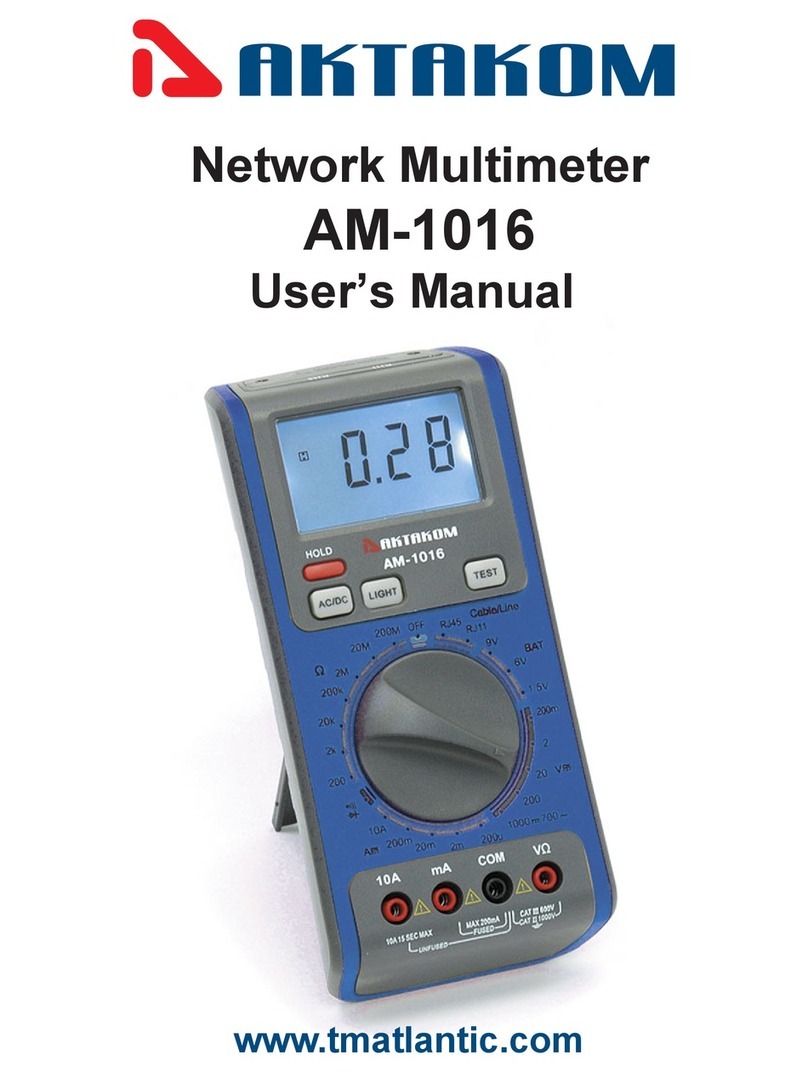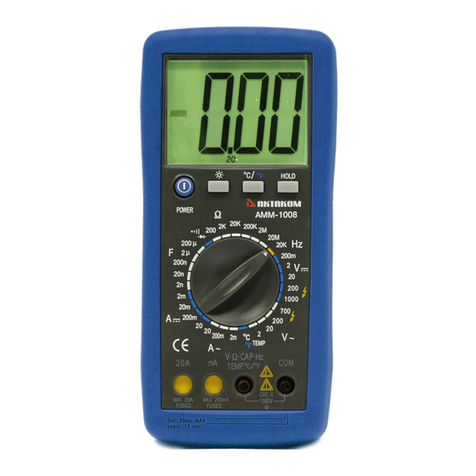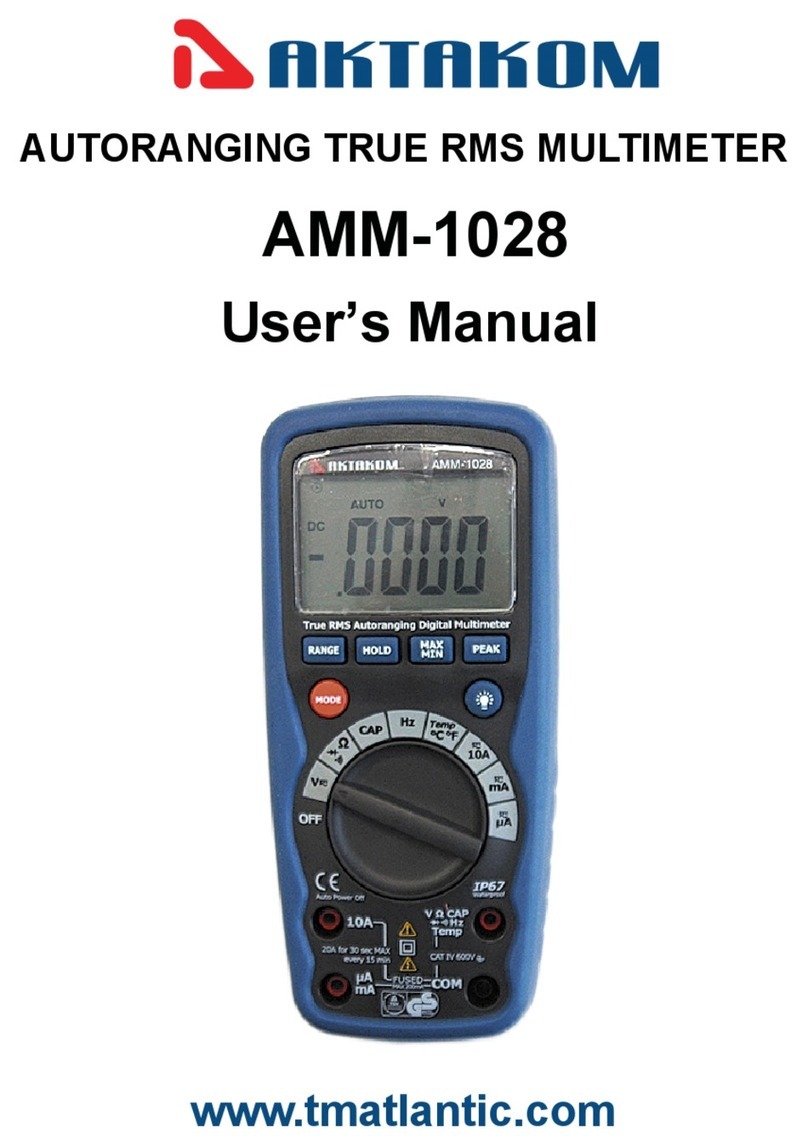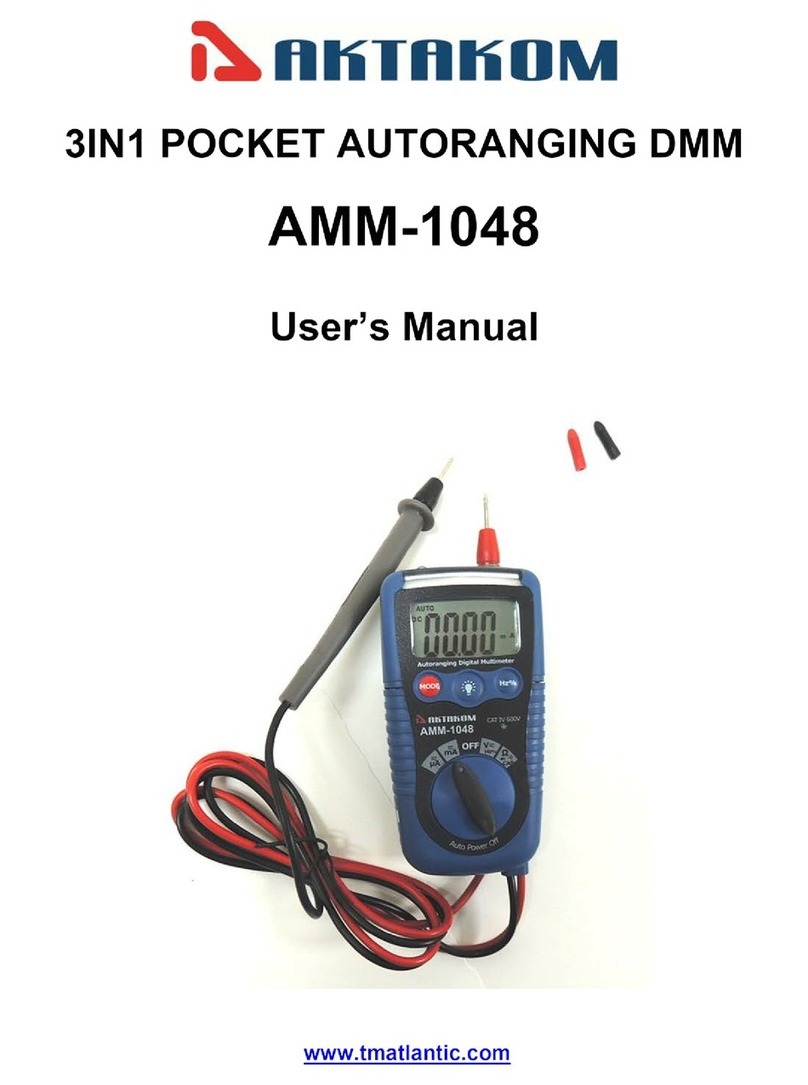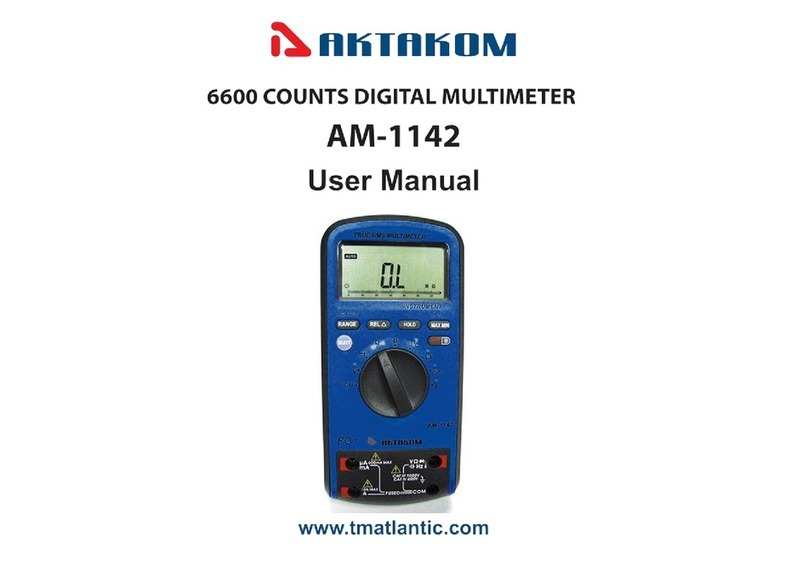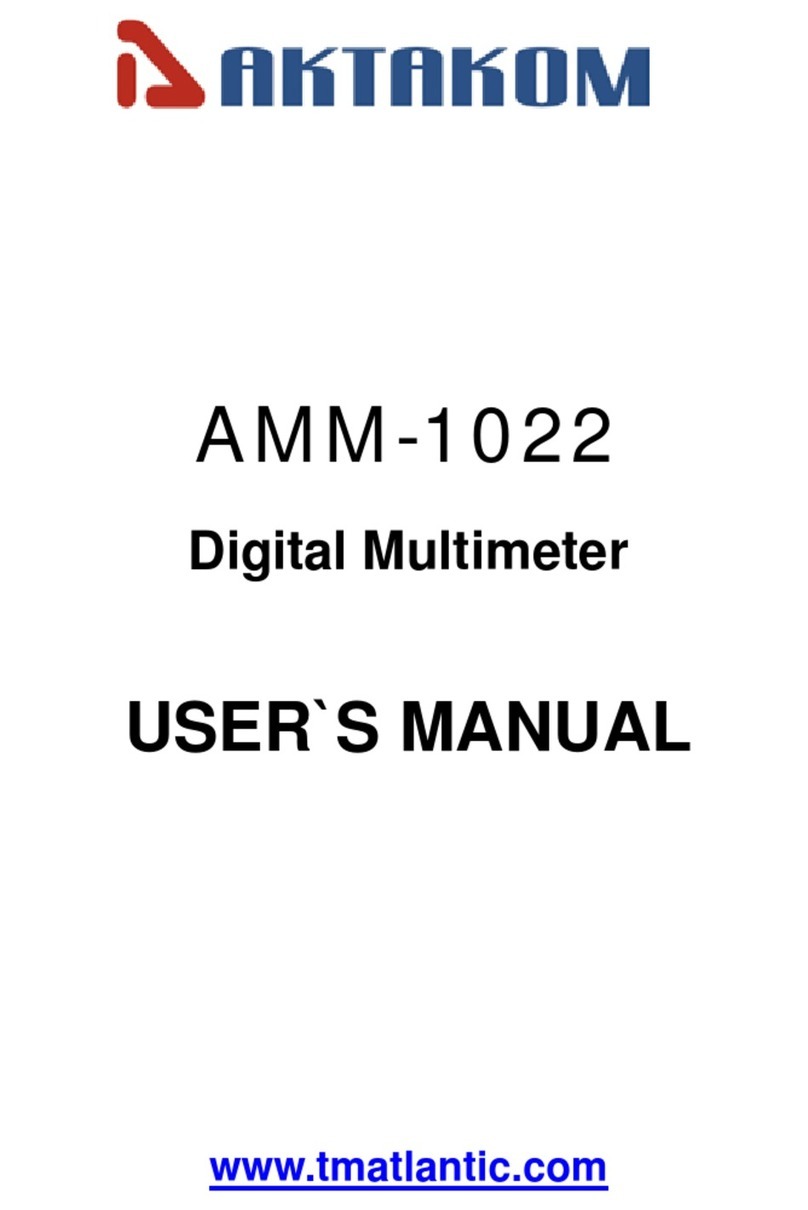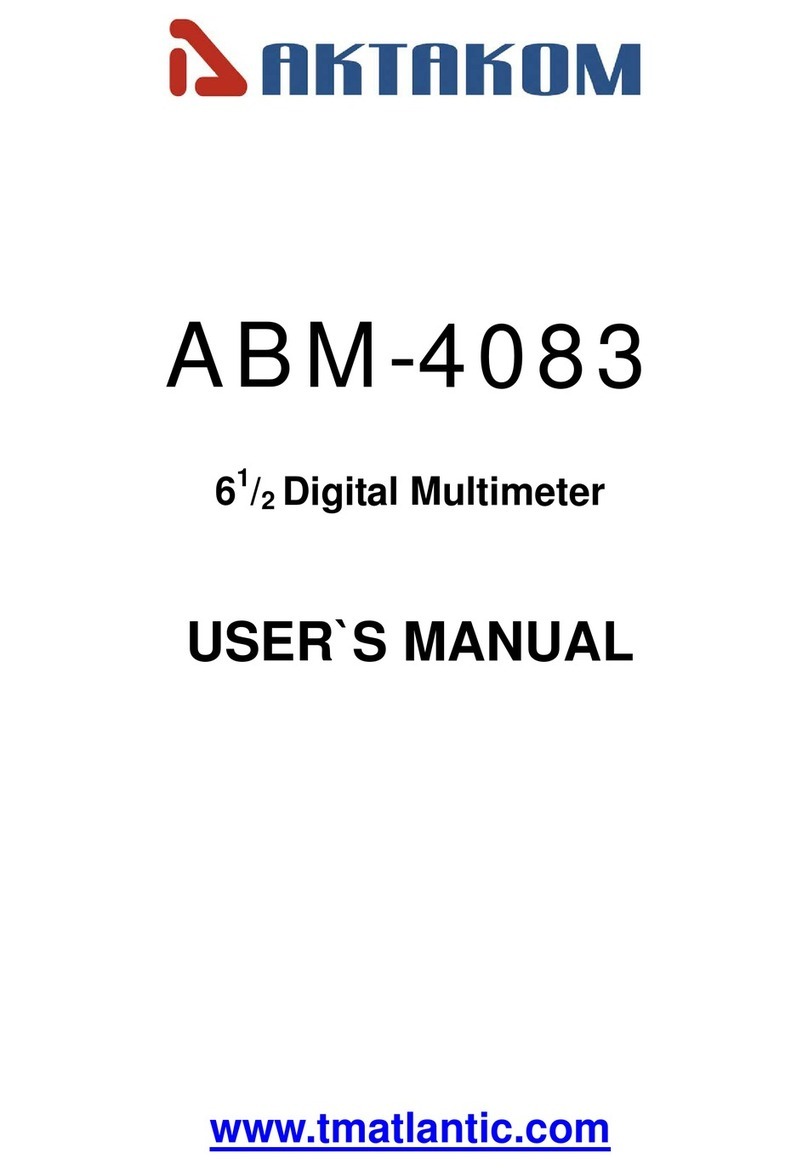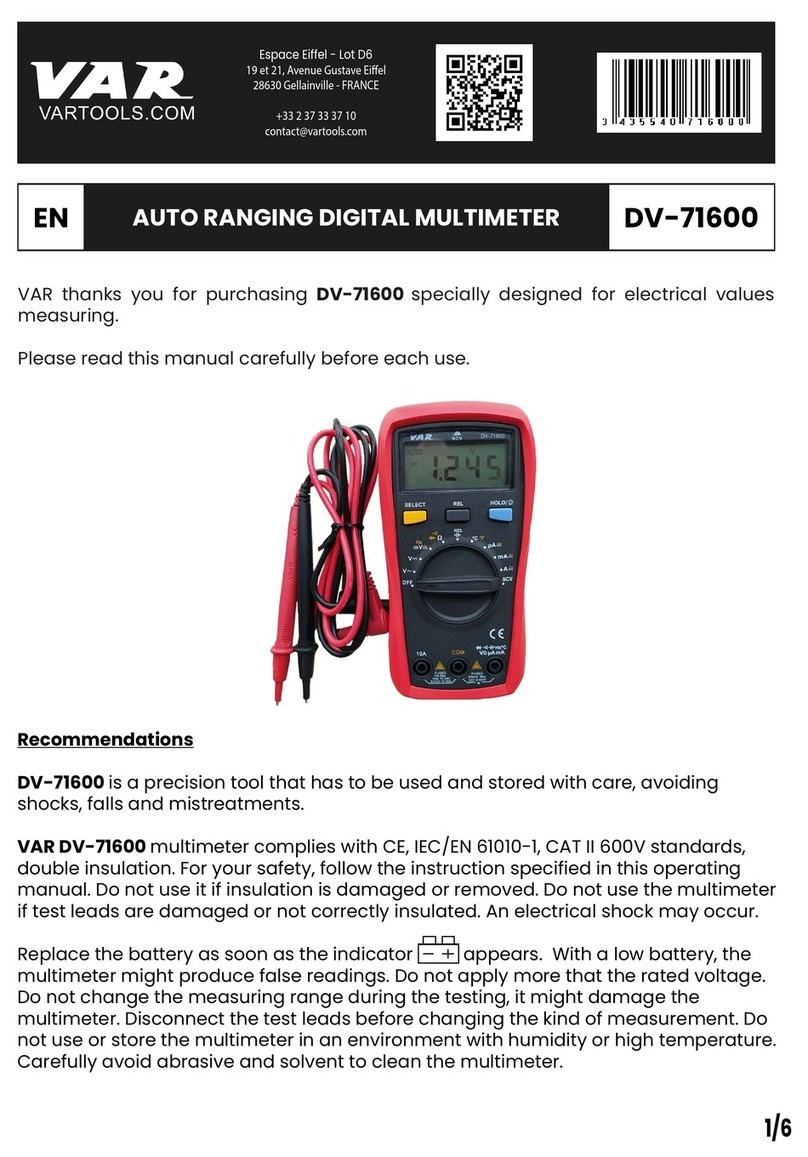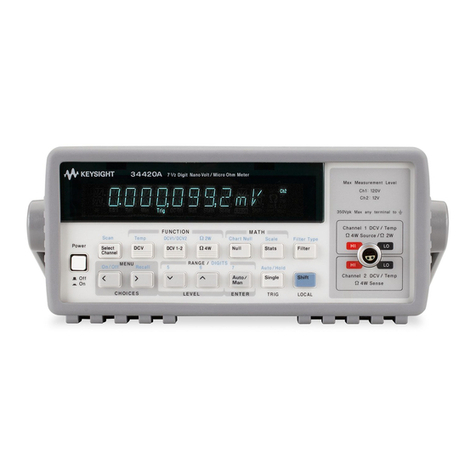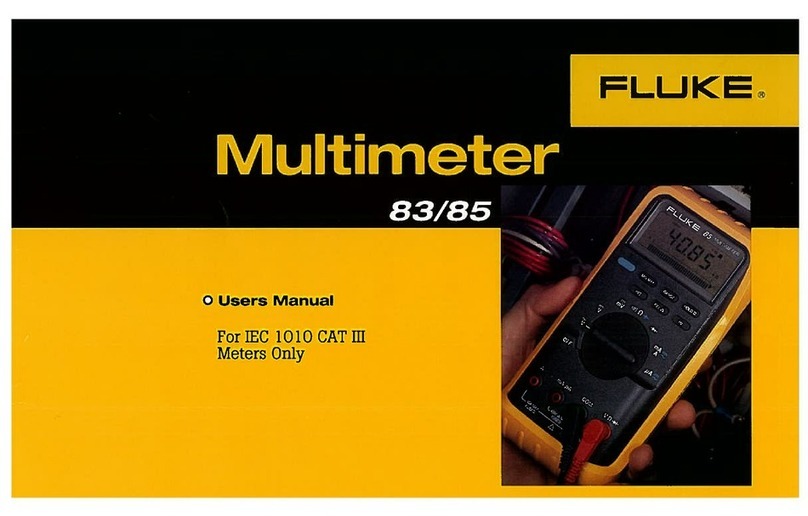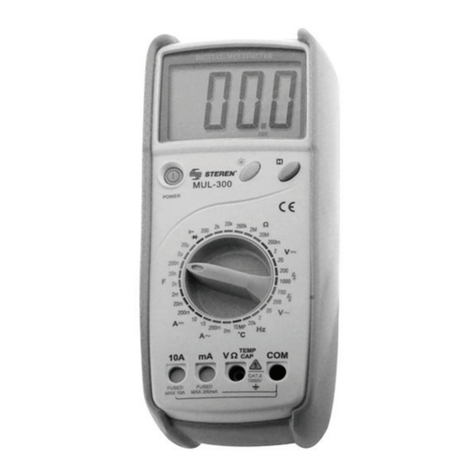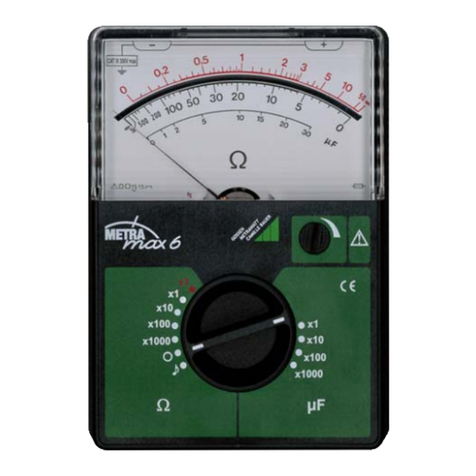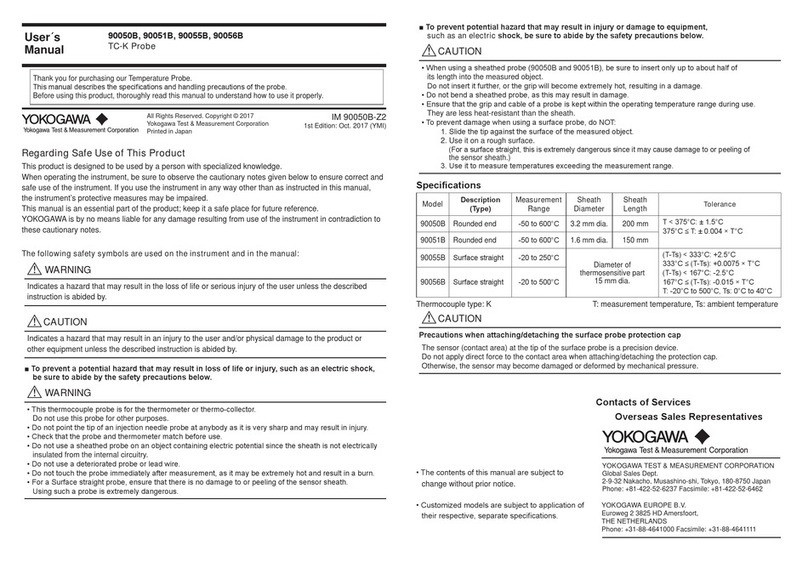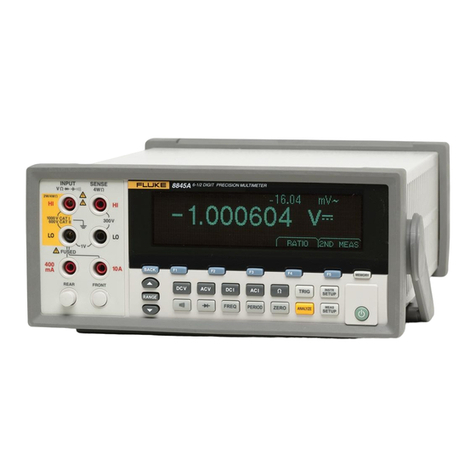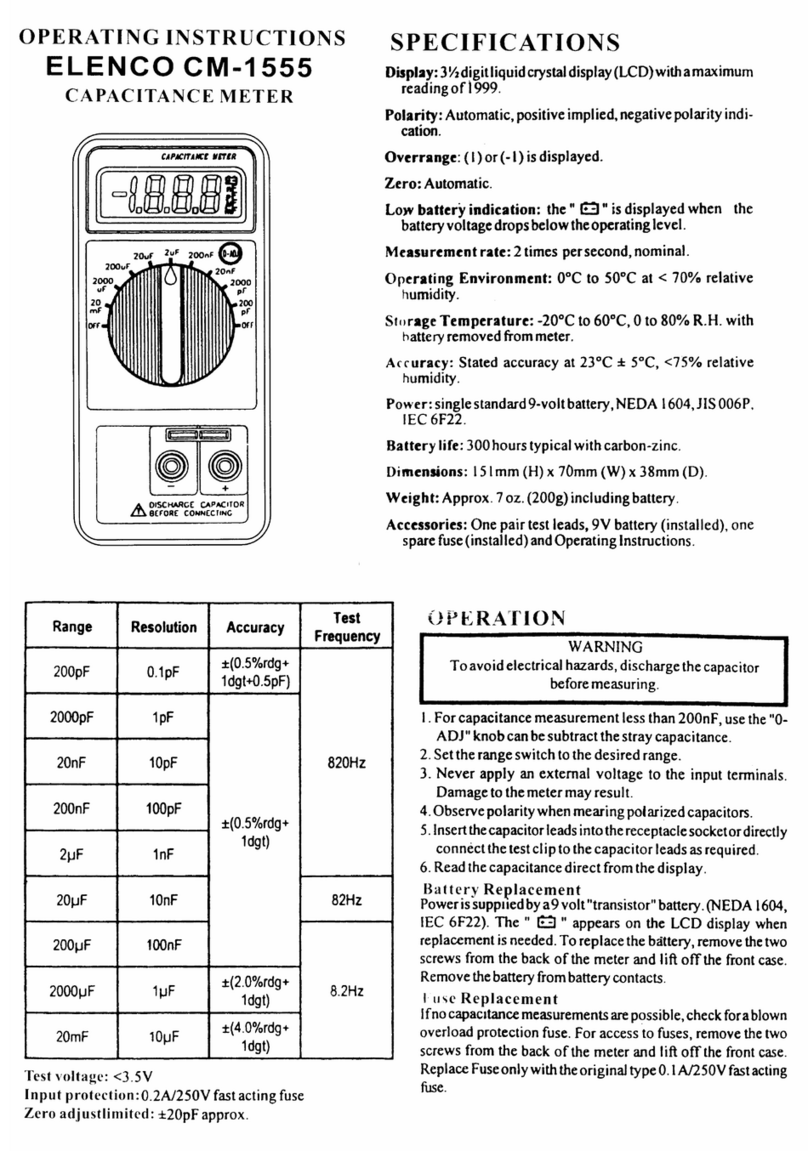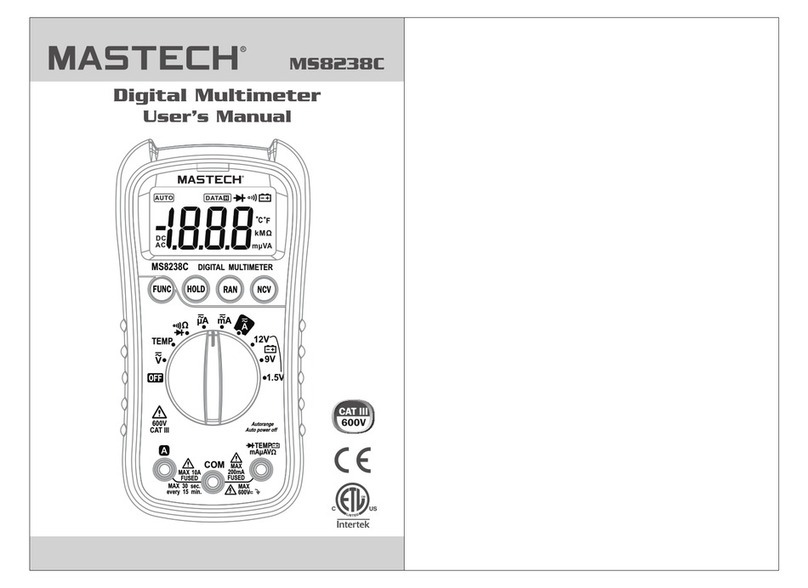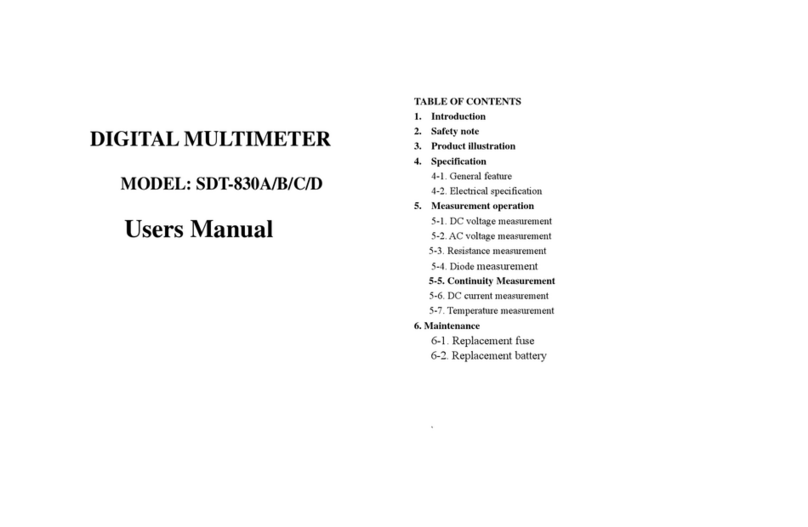4
the case) is removed. Look for cracks or missing
plastic. Pay attention to the insulation around the
connectors.
zInspect the test leads for damaged insulation or
exposed metal. Replace damaged test leads with
identical model number or electrical specifications
before using the Meter.
z Do not apply more that the rated voltage, as
marked on the Meter.
z When measurement has been completed,
disconnect the connection between the test leads and
the circuit under test, remove the
esting leads away from the input terminals of the Meter
and turn the Meter power off.
zDo not carry out the measurement when the
Meter’s back case and / or battery door is opened to
avoid electric shock.
zWhen the Meter working at an effective voltage
over 30V in AC, special care should be taken.
zUse the proper terminals and functionyou're your
measurements.
zDo not use or store the Meter in an environment of
high temperature, humidity, explosive, inflammable
and strong magnetic field. The performance of the
Meter may deteriorate after dampened.
zDo not use the Meter if the surface of it is wet or
the user’s hands are wet.
zWhen using the test leads, keep your fingers
behind the finger guards.
